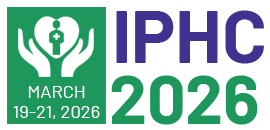Title : Fitness as a vital sign and population health metric
Abstract:
The evidence that cardiorespiratory fitness (CRF) predicts morbidity and mortality independent of common risk factors is indisputable. However, CRF is impractical to measure in healthcare or community health settings. We used a new estimated cardiorespiratory fitness (eCRF) algorithm based on 42,676 healthy adults that use information routinely documented in electronic health care records to predict abnormal blood glucose incidence. Participants were adults (17.8% female) 20-81 years old at baseline from the Aerobics Center Longitudinal Study between 1979 and 2006. eCRF was based on sex, age, body mass index, resting heart rate, resting blood pressure, and smoking status. CRF was measured by maximal treadmill testing. Cox proportional hazards regression models were established using eCRF and CRF as independent variables predicting the abnormal blood glucose incidence while adjusting for covariates. Of 8,602 participants at risk at baseline, 3,580 (41.6%) developed abnormal blood glucose during an average of 4.9 years follow-up. The average eCRF of 12.03 ± 1.75 METs was equivalent to the CRF of 12.15 ± 2.40 METs within the 10% equivalence limit. In fully adjusted models, the estimated risks were the same (Hazard Ratios = 0.96), eCRF (95% C.I.s = 0.93−0.99), and CRF (95% CI of 0.94−0.98). Each 1-MET increase was associated with a 4% reduced risk. eCRF can be a vital sign and population health metric used for research and prevention.
Audience Take Away:
- The audience will be able to learn the importance of cardiorespiratory fitness measurement and the value of estimated cardiorespiratory fitness (eCRF) in population health assessment, healthcare, and research.
- The audience will learn how to apply the eCRF algorithm to their work.
- This research is designed for other faculty to use and expand their research or teaching.
- The eCRF solution is designed to embed in electronic health record software or ad hoc with population health data.
- Currently, the solution can help aid in abnormal glucose prediction.
- The research will be applied across morbidity, mortality, and demography.



